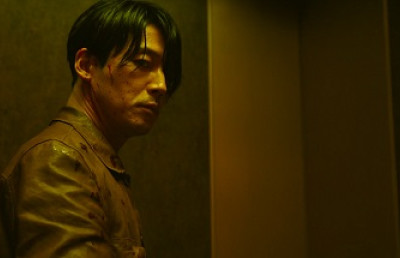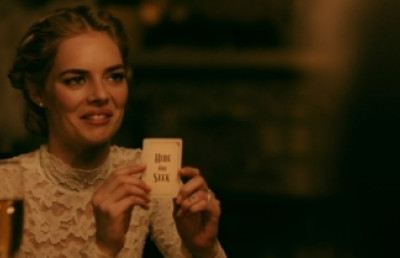The 27th Bucheon International Fantastic Film Festival
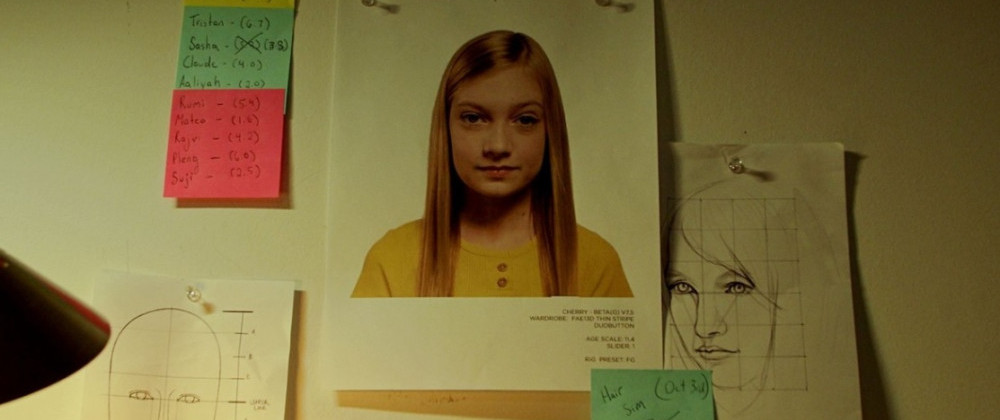
We live in a digital, uber-modern world: that’s the message from the 27th Bucheon Fantastic Film Festival. Following the global trauma of pandemic isolation, the films I viewed at this year’s festival overwhelmingly pointed to the shared anxieties of a post-pandemic world, including but not limited to the boons and banes of a digital simulacrum of social life, interpersonal disconnection, voyeurism, economic decadence, institutional instability, and even nuclear warfare. From Franklin Ritch’s stellar probe of machine learning in The Artifice Girl and Takamasa Oe’s touching use of an in-world app for real-world means in Whale Bones to Park Sang-min’s stylistically innovative Korean screenlife film I Haven’t Done Anything, these are the films of the digital anthropocene.
It’s right and fitting that this critic’s coverage of BIFAN, coinciding with and celebrating the 50th anniversary of the Seoul satellite city Bucheon, was virtual—first from Boston, Massachusetts and then, after a relocation in the middle of the festival’s 11 day runtime, from Northeast, Ohio. Four different televisions, a laptop, and several methods of screeners were used to watch this year’s selection of BIFAN films—the first time they have been offered remotely to the press, signaling something of a new approach for our still shaping post-pandemic world.
With 262 entries from 51 unique countries, it should require no warning that the films differ in their approach to the contemporary world; they do, however, reflect similar and related anxieties, even when they fail by this critic’s standards or if they are in rebellion against said realities. In style and substance alike, the anthropocene is now digital.
The Artifice Girl
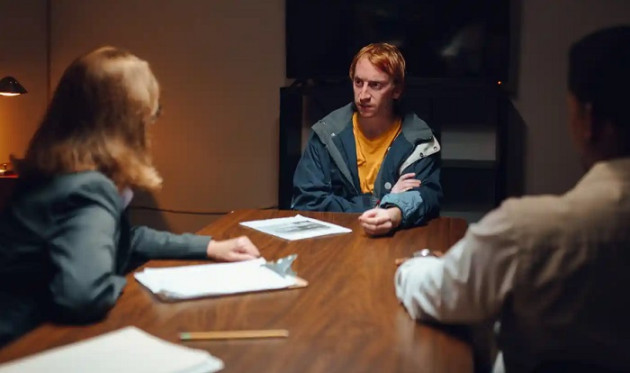
One of the highlights of the festival, Franklin Ritch’s feature directorial debut The Artifice Girl, is also the most technologically timely film I had the chance to see. With a micro-cast and just three locations, this low-budget philosophical sci-fi thriller prophetizes Chat GPT’s boom and is archetypically designed for the ethical shenanigans of real-time, conversational AI. Ritch, who stars as a nerdy hunter of pedophiles, also writes and edits his debut—and he does so with a tremendous clarity of vision and philosophical integrity.
The premise is original: Gareth (Ritch), a for-hire VFX artist that once worked de-aging dead people for Star Wars films uses his digital artistry for the ultimate good in creating Cherry (Tatum Matthew), a digitally constructed little girl used in combination with near real-time rendering to lure in and then report child sex predators to the authorities. As Cherry evolves through machine learning, Gareth and the small team of authorities he works with must re-engage their approach to the very philosophical center of their work: preventing the abuse of still-developing beings.
The directorial work is impressive but Ritch’s script and performance are something to marvel at. With a budget comparable to a non-profit’s coffee expenditures, the believability of Cherry’s achievement of artificial intelligence—as well as Gareth’s own abilities to actually construct such a program—are married to the script’s realified vocabulary and its fast-paced confident delivery. Ritch’s targeted quirkiness and complete confidence remind me of Jesse Eisenberg’s performance in The Social Network (2010)—a comparison I don’t tread lightly with. My only regret is his retreat as an actor in the third chapter, the completely philosophical bookend to the thriller that came before.
As a director, writer, and most certainly, an actor, Ritch has jumped to the very top of this critic’s can’t miss list.
The Up Rank
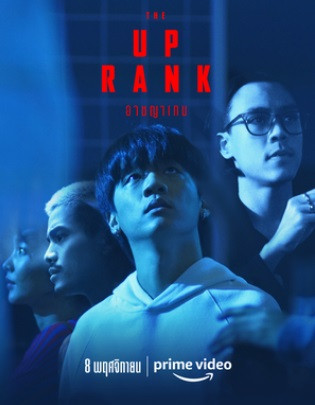
BIFAN’s foray into the digital anthropocene continues with Kulp Kaljareuk and Vathanyu Ingkawiwat’s co-directed film The Up Rank. This Thai film digitizes and sanitizes a familiar premise—that of the drug king or gang leader’s rise (and fall). In The Up Rank, the usual cocaine or opium is substituted for a higher rank in a first-person shooter online video game. Like a cult society, professional players are recruited to farm high-ranking accounts with the appropriate status markers for players who desire the high-ranking status but are unable to do the requisite work. The surreptitious movement of goods for profit is not even illegal, at least not at first. With regret, this reflects one key truth of life under the digital revolution: so much of our online presence is, in fact, quite vapid.
Disorder
Like The Up Rank, the festival’s only Mongolian film, director Batdelger Byambasuren’s Disorder uses a cheating premise. Set in a stunningly aging regal school building, the students in Byambasuren’s film are all studying for a government-issued exam though they do so only at night. The school’s funders and director, seemingly confusing social psychology experiments with good pedagogy, justify the approach with a predator-prey analogy: since predators hunt at night, the ideal student must become a predator. When one student discovers his father is in prison and his only hope is for his son to pass the exam and become a lawyer, the students collectively work together to cheat the exam. With the collective help of a series of students, each with a different role, one student plays the correct answers on an A-D scale on a Mongolian “fiddle” corresponding with the multiple choice options. The teacher, a clog in the utilitarian education system, has no knowledge of the traditional instrument, so she just assumes the music to be an annoyance and nothing more.
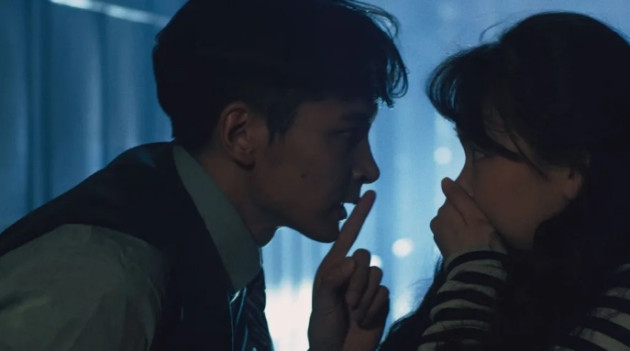
The cheating plot itself is a remarkably simple retreat from the uber-modern and insists on a confidence in tradition that often goes missing in the process of modernization. (Just as I write this review, South Korea, the host of the festival, eliminated their traditional aging system in favor of international norms—thus sacrificing tradition on the altar of modernity.) The students show remarkable genius to pull off their cheating scheme—shot with the same cinematic ques as a heist— and leave little doubt about how useless these authority issues standardized tests must be in the creation of intelligent civil servants.
There’s also an interesting political story, one deeply skeptical of institutional reform though somehow hopeful for it, that comes alive in the final third of the film. It will suffice to say that the school is up to something more insidious than initially communicated. Avoiding spoilers, Byambasuren’s film teaches that to (undesirably) keep the cycles of the status quo alive, social memory must be collectively and repeatedly challenged—only then will potential predators become prey. And he must not be an optimist because the cycles of abuse will continue.
Jango: Uncharged
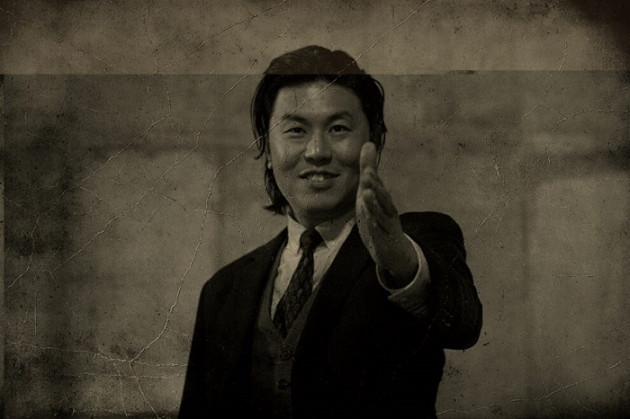
My first Korean language film at the Bucheon-based festival, Jango: Uncharged, was repulsively baffling. As the title promises, Baek Seung-kee’s western-comedy parodies Quentin Tarantino’s Django Unchained —but it also draws from Charlie Chaplin’s quirky slapstick gags and from the well of another Quentin, the French provocateur Quentin Dupieux, whose own superhero parody Smoking Causes Coughing also screened at the festival. The inspirational trio of Tarantino, Chaplin, and Dupieux creates for an indelibly unique possibility for a directorial voice in Baek.
Unfortunately, the provocative humor of Dupieux and the silent silliness of Chaplin become completely repulsive when applied to a slave story. In the opening scene of Jango: Uncharged, a slave owner rides an intentionally comedic stuffed horse and leads a series of enslaved Korean men in only their underwear (the colorful sort with graphics on them) while absurdist, over-dramatic horse sound effects carry the soundscape. The scene is set “somewhere in Texas” and the men all speak in English. The movie has more to it than a disagreeable slave story, but the symbols of American chattel slavery will never be conducive to comedy. Jango lost me with its very first scene.
Whale Bones

One of the 10 films in the Bucheon Choice: Features category, alongside Disorder and The Artifice Girl, Takamasa Oe’s Whale Bones catalyzes itself with a dating application meeting between Mamiya (Motoki Ochiai) and Aska, a too young for him high school girl (played by the Japanese popstar, ano), that ends when the former finding the latter mysteriously dead when he comes out of the shower. Mamiya loads her in his trunk and drives off to bury her when she mysteriously disappears during the drive. Later, Mamiya sees her on an augmented reality mobile app where real-life people leave mysterious video recordings (called “holes”) for others who can only see them if they open the app in the same geographical space as where the note was left. Her last hole was in his apartment. There’s something about life behind a screen that enables misunderstood personalities like Aska’s to shine through, or perhaps live on, in a way that the more transient real world can hinder.
Whale Bones is the best looking film I saw from the festival, with the Danish Superposition coming in second. Oe, who also wrote 2021’s critic darling Drive My Car, has an astute eye and a keen sense of small-scale storytelling. The colors of Whale Bones often contrast and break through the mundane production design, giving a single in-frame element a visual pop that the rest of the frame lacks. In the initial encounter between Mamiya and Aska, she wears a bright red coat that’s captured beautifully by the cinematography in the dark-colored diner and alludes to her inner desire to be seen. The images even carry with them the look of film stock, though I’m unsure if it’s captured through actual film or if the look is expertly replicated by cinematographer Shin Yonekura. Whale Bones is the kind of film that even if it’s not your cup of tea, it would be difficult to dislike because it looks so damn good.
I Haven’t Done Anything

I was afraid of watching I Haven’t Done Anything for the singular anxiety of doubting I had the ability and wherewithal to comprehend a screenlife film in a language outside my own fluency. In the past, I have championed exemplars of screenlife as a format for their capability to layer images across the entire depth of the screen—and this very capability is intimately tied to the competence of the filmmakers to use the screen to do more than simply present the dialogue that the story is dependent on. Ignorantly, I thought this meant screenlife would be a language-dependent film style. It would be an impossible and aimless task to translate the entirety of the comment sections, the advertisements on the side of the screen, and the computer start-up settings. Worry not: I Haven’t Done Anything, the first Korean screenlife film that I am aware of, proves that, like all of cinema, this powerful new medium can be translated too.
Oh Tae-kyung stars as himself, a promising young actor whose career didn’t turn out quite the way he would have written it, and now runs a YouTube channel where he performs the “wishes” of his super-followers (patrons) while dressed like Oh Dae-su (Choi Min-sik, who had a retrospective programmed in his honor at this year’s festival) from Oldboy. One follower offers him an impressive sum of money if he can find out why a man—picketing alone, not talking, and donning a sign that reads “I haven’t done anything”—is protesting.
Our perspective assumes the screen of the patron, “Bulldog.” As Bulldog views Oh’s videos, most of what we actually see just looks like regular YouTube. Oh’s channel becomes indistinguishable from an acting performance (which, of course, it is) over the runtime and the film plays with that creatively. Director Park Sang-min fully exploits the limited perspectives of our screens and he does so while demonstrating a new and, until now, underused tool for the format: advertisement. As the picketing man becomes a cultural sensation, advertisers and even political campaigns capitalize on him and his sign as a social meme—and, just like a real channel, the primary video is interrupted with these ads, which accomplish far more than simple digital verisimilitude. If one pays attention closely, they work in unison with the main thematic thrusts of I Haven’t Done Anything: performativity and commodification.
2035
In another film staring Oh Tae-kyung, director Park Jae-in’s 2035 is set on the 10 year anniversary of the reunification of the Koreas and follows a Korean-American journalist, Steve (Oh), as he investigates sightings of the mysterious green light that first appeared in a 2024 forest fire. The forest fire near the DMZ unwittingly initiated an accidental reunification process when the South Korean military helped put out the fire.
Despite its peculiar setting (10 years into reunification) and equally stupefying plot catalyst (a weird green light), 2035 plays into the global anxieties of the 2020s. The revival of the nuclear threat, uncomfortably empty airports, economic decline, and traitorous nationalism haunt the reunification. The victims of Park Jai-in’s filmic reunification experiment look a lot like the Minjung of today.
2035 is presented as found footage and features a markedly higher resolution than most found-footage pictures. This is explained within the narrative of the story when Steve’s friend criticizes his retro camera (it’s only 4k; even 8k, he tells Steve, sucks). Apparently, in the near future, found footage will replicate the look of the Galaxy S23 Ultra camera: high ISO, low contrast, pristine.
Sri Asih
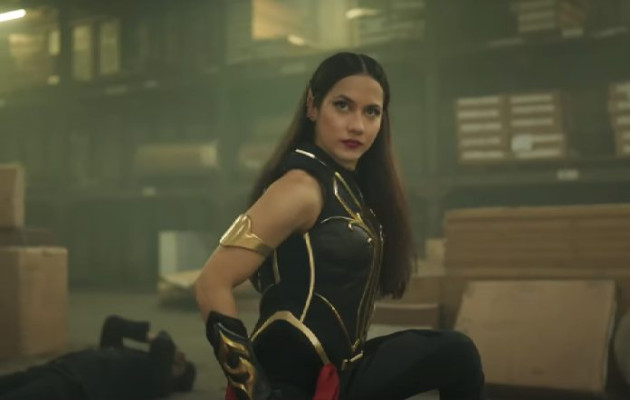
The second film in the Indonesian superhero series being called the Bumilangit Cinematic Universe, following the well-known horror stylist Joko Anwar’s Gundala (2019), Sri Asih is a remarkable achievement within the superhero genre. In thematic substance, style, and ability to sample other genres—as well as its ability to center female artistic voices—director Upi Avianto’s BCU entry seems specifically aimed at the Marvel Cinematic Universe’s artistic and moral shortcomings.
Alana (Pevita Pearce) is a young woman whose powers are linked to the ancient goddess Sri Asih through a volcano related accident at the time of her birth. The first time she sticks up for someone else is for a nerdy reader of comic books bullied at the orphanage where she grew up. Her early moral convictions never waver; she is simply a good person out to fight evil. And evil, like its BCU predecessor, comes in the form of excessive capitalism and greed. The heroes of Sri Asih are aligned with the suffering of the poor and against the traditional halls of power. The villain, here, is a cop by profession (though that has little to do with his villainy) and his partners are capitalists down to the last bones in their bodies. Given the divine source of her powers, which are never neatly defined, there is a sense of a cosmic preference against the abusers of power, against the oppressors of the poor. In one brilliant rhetorical directorial choice, the villain dons a Medieval apothecary mask and is implicitly associated with the pain of the recent pandemic (which, of course, hurt the poor more than anyone else). It may not seem like I’m asking for much, but it’s refreshing to have superheroes with actual super motives once again.
As superhero fatigue has weaved its way in and through the Western movie-going public, in addition to losing moral direction, the major studios have responded with a facade of genre mashes to attract secondary and tertiary audiences. Doctor Strange in the Multiverse of Madness would be a horror film, audiences were promised; romantic comedies and westerns have also been teased without full delivery. Sri Asih, unlike its Marvel and DC peers, is unafraid of fully embracing multiple genres. The image of a truly menacing and cursed looking black crow comes just minutes after a boxing training sequence, where Alana is schooled by her mother and given a philosophical lesson about the control of her emotions in the process. The comic-bookiness of it all melds seamlessly with the sport (MMA) plot, the crime/police narrative, and the horror symbology, creating something of a tag-team genre collaboration rather than a trojan horse.
From a comparative perspective, I also can’t help but notice that it took the BCU just two movies to center on a female superhero and to hire a female director. No matter what you’re looking for, Shi Asih has what its Western peers don’t at the moment: direction and verve.




